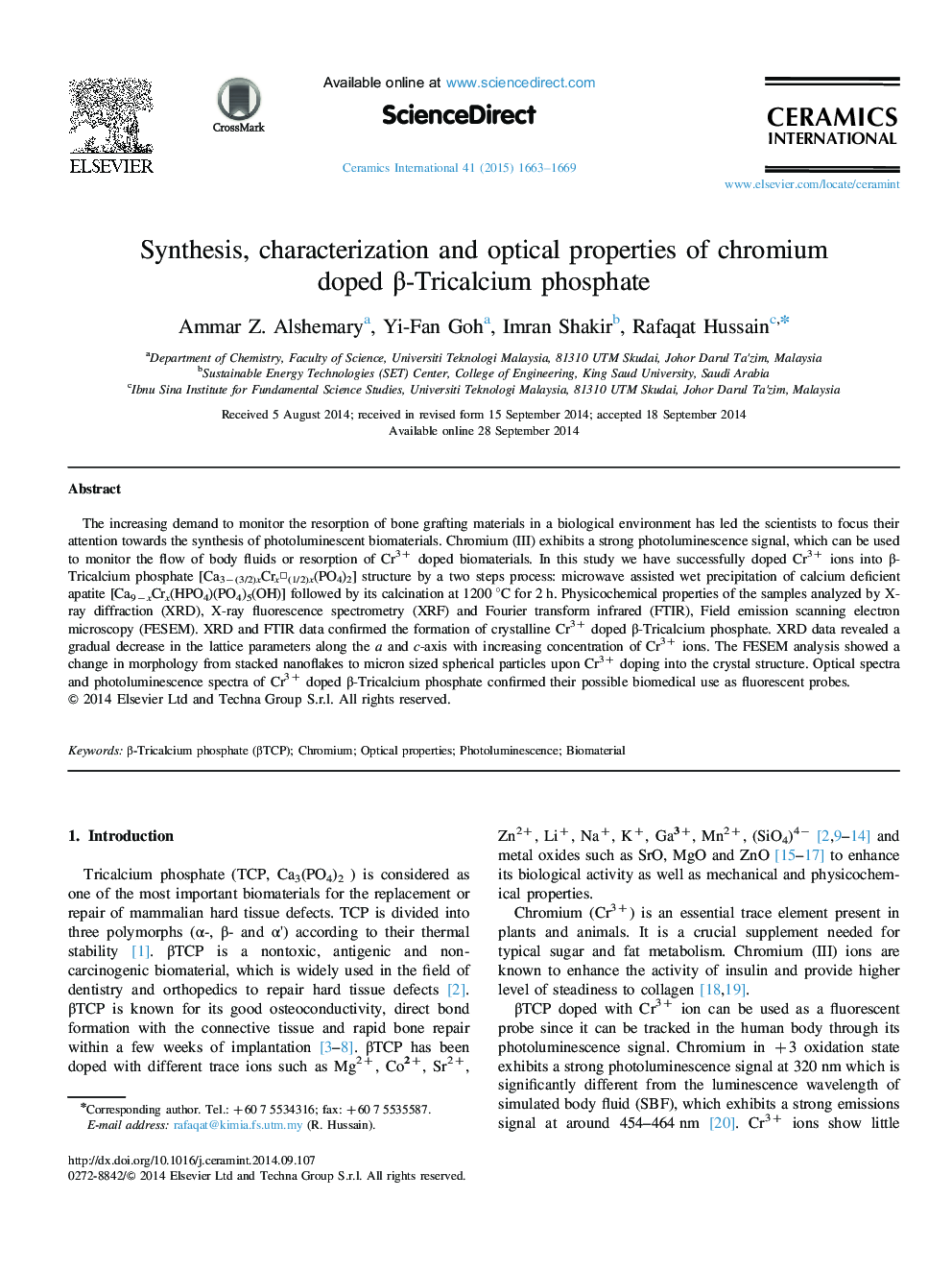| Article ID | Journal | Published Year | Pages | File Type |
|---|---|---|---|---|
| 1460872 | Ceramics International | 2015 | 7 Pages |
The increasing demand to monitor the resorption of bone grafting materials in a biological environment has led the scientists to focus their attention towards the synthesis of photoluminescent biomaterials. Chromium (III) exhibits a strong photoluminescence signal, which can be used to monitor the flow of body fluids or resorption of Cr3+ doped biomaterials. In this study we have successfully doped Cr3+ ions into β-Tricalcium phosphate [Ca3−(3/2)xCrx□(1/2)x(PO4)2] structure by a two steps process: microwave assisted wet precipitation of calcium deficient apatite [Ca9−xCrx(HPO4)(PO4)5(OH)] followed by its calcination at 1200 °C for 2 h. Physicochemical properties of the samples analyzed by X-ray diffraction (XRD), X-ray fluorescence spectrometry (XRF) and Fourier transform infrared (FTIR), Field emission scanning electron microscopy (FESEM). XRD and FTIR data confirmed the formation of crystalline Cr3+ doped β-Tricalcium phosphate. XRD data revealed a gradual decrease in the lattice parameters along the a and c-axis with increasing concentration of Cr3+ ions. The FESEM analysis showed a change in morphology from stacked nanoflakes to micron sized spherical particles upon Cr3+ doping into the crystal structure. Optical spectra and photoluminescence spectra of Cr3+ doped β-Tricalcium phosphate confirmed their possible biomedical use as fluorescent probes.
